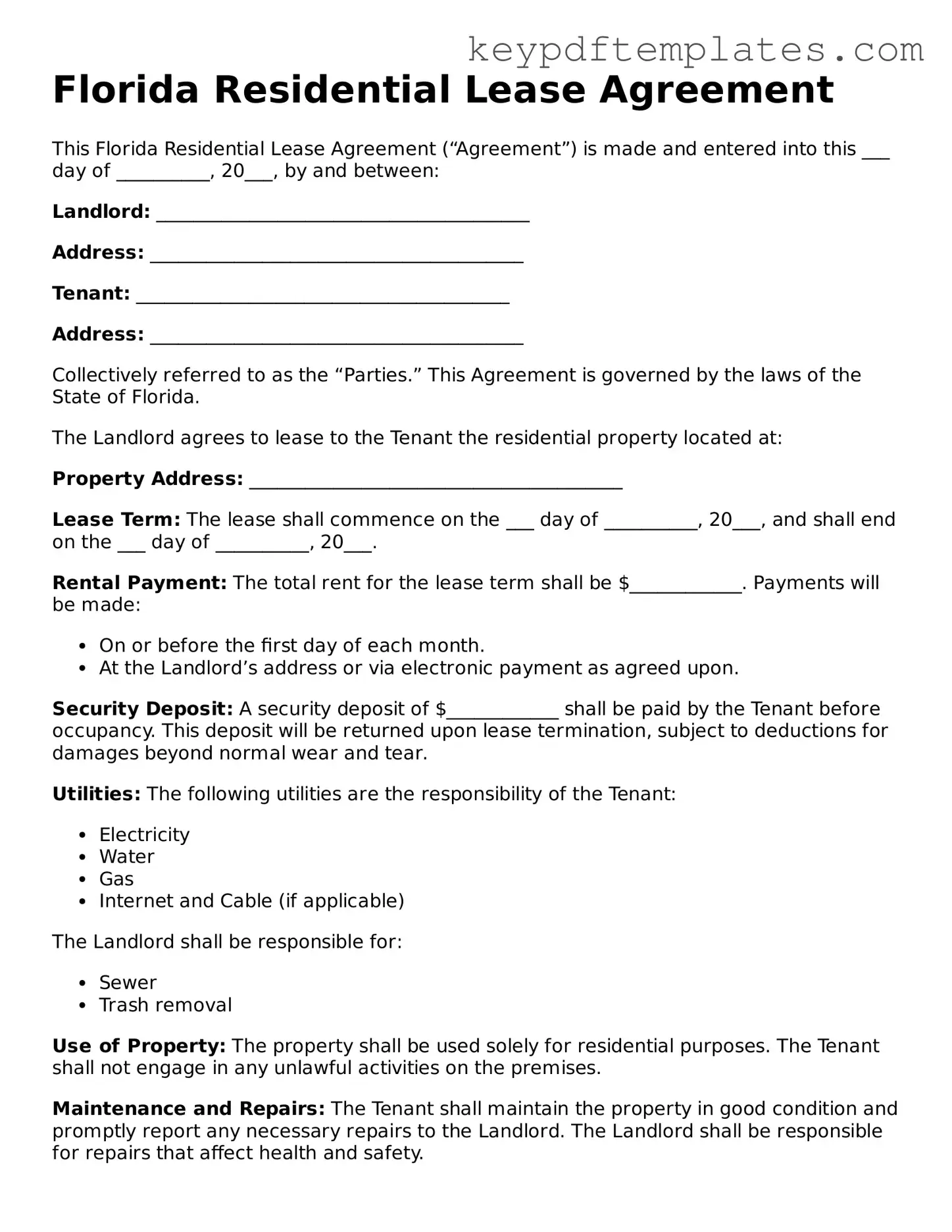Legal Residential Lease Agreement Document for the State of Florida
The Florida Residential Lease Agreement is a legal document that outlines the terms and conditions between a landlord and a tenant for renting a residential property in Florida. This form serves as a binding contract, detailing the rights and responsibilities of both parties involved. Understanding this agreement is essential for ensuring a smooth rental experience and avoiding potential disputes.
Modify Document Online
